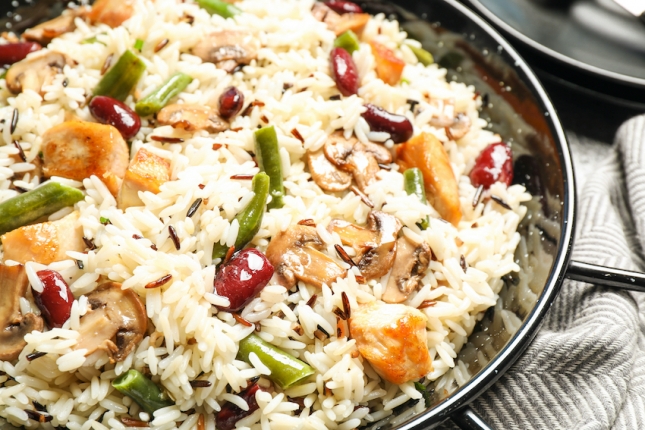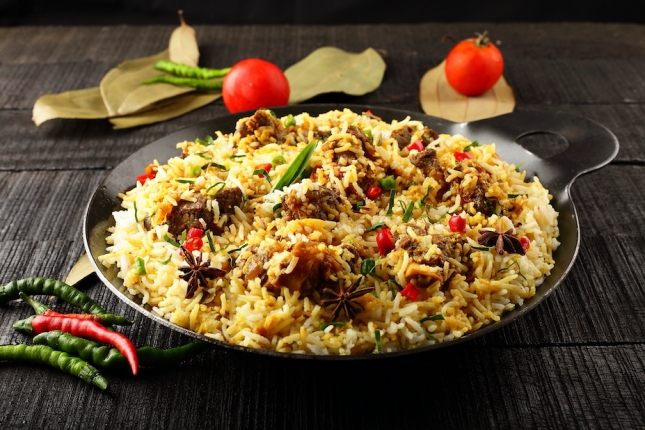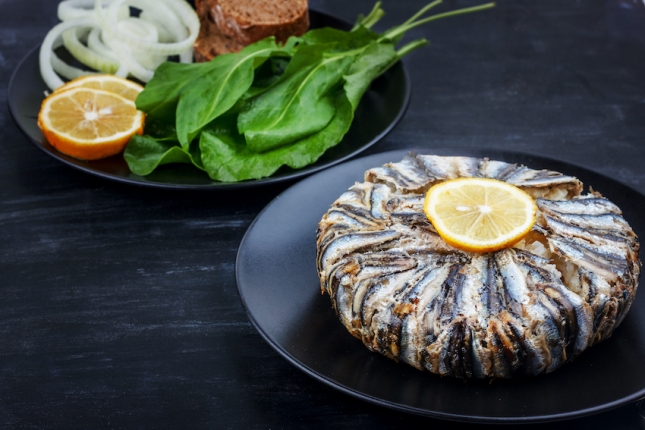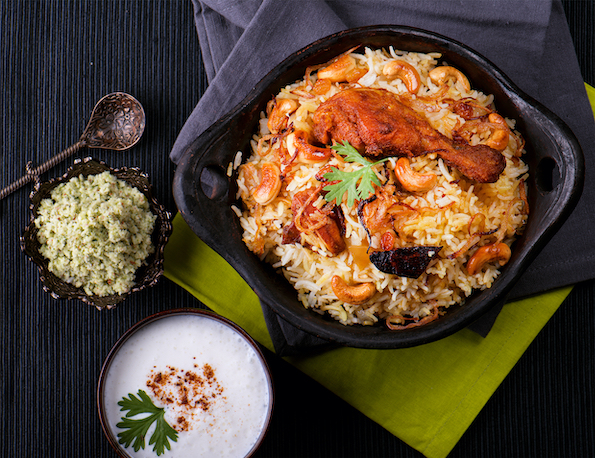The History of Pilav and the Food of Turkey
Published : June 01, 2020
Rice in Turkish cuisine is a tradition of hundreds of years if not thousands.
Rice has been one of the basic ingredients of many cuisines throughout the history and Turkish food is no exception, except the fact that rice in the Turkish cuisine has always been a ritual on its own. The Turkish word pilav, known as pilav in many languages, simply refers to rice or other grain cooked with water, stock, or broth mixed with butter, fat, or oil and prepared either plain or with spices, nuts, meat or vegetables. The Turkish gastronomy which is dated literally thousands of years has a specific focus on rice recipes as pilav has both been a shining star of the imperial menus as well as regular households.

Historians have found recipes of pilav on the 13th century, philosopher Mevlana Celaleddin Rumi’s own kitchen. In the Ottoman era, pilav with its many different varieties, had indeed a ceremonial quality. For example, in 1539, Sultan Süleyman the Magnificent recorded in detail all the foods served at the feast for the circumcisions of his sons Bayezid and Cihangir in a “feast register.” Pilav varieties which constituted a major portion of the menu included plain pilav, noodle pilav, saffron pilav, green pilav (colored with spinach and chard juice), red pilav (with grape molasses), şehriye (thin vermicelli) pilav, pilav with pomegranate molasses and pilav with flour. In his 17th century travelogue, the famous traveler Evliya Çelebi mentions various types of pilavs, including those with saffron, mulberry, pomegranate, wormwood, ambergris, meatballs, pistachios, crushed almonds and raisins. By the 18th century, historical findings show that seafood pilavs had taken their place among the popular flavors of the palace cuisine.

Making a basic rice pilav have been considered a passing test for apprentice cooks and brides- to-be for hundreds of years in the Turkish culture. The basic criteria is to have every single grain to fall apart separately and it is much easier to say this than cooking it.
Just as in the past, pilav in modern Turkey is prepared by a simple technique. The rice is sorted and washed, then allowed to soak in salted water and drained. It is then fried in oil (especially butter) and cooked with water and salt. At the end of the cooking processes, it must be left to rest for 15-20 minutes off the heat in order to achieve its best consistency.

Today, plain rice pilav with butter is often seen as a complementary dish to the main course. However, in the Ottoman period rice pilav was often served very sophisticated, laced golden with saffron and studded by ruby red barberries as the final course, ensuring diners were full and acting as a palate cleanser before dessert. Another simple way the Ottomans elevated plain rice pilav was to add chickpeas, dressed as if covered by a handful of gold coins. Often, real gold was incorporated to surprise and impress guests. In fact, each Friday Mahmud Paşa, Mehmed the Conqueror’s famous grand vizier, hosted an exciting lunch, thrilling his privileged guests at the climax of the meal by serving a tray full of rice and chickpea pilav made with real gold! Ironically, today’s chickpea-studded pilav is a common street food popular at food carts in Turkey, typically served with shredded chicken and often feeding late-night wanderers.
Perde pilavı, is made in the region of Siirt. It is cooked in a special “fez” shaped pot. A dough made of egg, milk, flour and oil, is rolled into a yufka and spread over the inside of this pot. The pilav, which has been partially cooked already with partridge or chicken meat and flavored with almonds and spices, is put into this pan and covered with this same dough. It is then cooked over coals. When it is done, it is inverted onto a plate, and is as beautiful as it is delicious. In Diyarbakır, this same dish is called duvaklı pilav.

The famous hamsi pilav of the Black Sea region, the pilavs made with olive oil in the Aegean region and the bulgur and white meat pilavs of the Mediterranean coast are all notable examples of their local culinary cultures.

Pilav has a special place at weddings. It is first among the wedding dishes, cooked with meat broth and served topped with pieces of meat.
In Turkey, the coming of spring and the reawakening of nature is celebrated during the Hıdrellez festival. At such seasonal festivals like Hıdrellez and Nevruz, the serving of pilav with meat is a widespread tradition.

Similarly, in many regions this fancy lining is made with glistening fried slices of eggplant and known as patlıcanlı pilav, with golden flesh and purple peel streaks revealing not only a sight to be seen, but a taste to be savored. In Gaziantep, rice pilav is regarded as a featured dish and eaten separately, with recipes such as kapamalı pilav, literally “covered pilav,” featuring the rice swathed in a layer of meat or nuts. Other favorites, like both Uzbek and Bukhara pilav, are among the most elaborate, standout pilavs, incorporating onions, carrots, nuts, raisins, and cubed lamb meat among their ingredients.

Rice pilav still holds a place as one of Turkey’s most versatile plates. The kuru fasulye pilav duo of beans and rice is often considered as one of Turkey’s national dishes. Rice pilav also serves as a nice complement to a night at the mezze table, where continuous toasts of rakı are inevitable. On such nights, seafood enriched rice pilavs with mussels, octopus, or the aptly named meyhane pilavı, made with, peppers, onions and fried cubes of eggplants, typically eaten cold or lukewarm, are classic fare. There is also seasonal must-have rice pilav dishes, with spring welcoming fresh peas and artichokes for bezelyeli pilav and enginarlı pilav respectively, and the summer delight found in domatesli pilav, made with sun-dried tomatoes.

About Turkey
Located in the Mediterranean and connecting Asia and Europe continents that are separated by famous Bosphorus, Turkey is a unique destination that welcomed last year about 40 million tourists. The country that has always been a hub for cultural interaction and home to varying climates inspires the visitors today with its history, nature and gastronomy that reflect the diversity of civilizations for centuries. Located at the crossroads of cultures, Turkey has a distinctive understanding of art and fashion which is the synthesis of tradition and modernity. Turkey's extremely dynamic shopping and entertainment life also attracts visitors from all over the world.
For more about Turkey please visit:
Other Related Content on Flourish you might like...
- Fast Fish Medley
- One Pot Chicken and Rice Casserole
- Snapper with Pink Grapefruit and Mint Rice Salad
- Flourish travel: Kalbarri
- Two-Layer Chocolate Cake
Flourish Article & Blog Pages
The History of Pilav and the Food of Turkey
- Make. Share. Love. - Libby Collett talks with Fremantle craftsman, Justin Elvin
- Nostalgic Tastes
- Lack of Presence Makes the Friends Grow Fonder
- Food for Flourish
- Dr Ann O’Neill - Angelhands
- Flourishing Woman: Amanda Elizabeth
- Flourishing Woman: Jessica Brainard
- Flourishing Woman: Kerri Ann Garraway
- A How-To Guide for Women’s Personal Safety
- A Fresh Beginning - Genuinely Southern Forests
- Catch Up with an Old Friend - Adelphi Bar and Grill, Parmelia Hilton Perth
- Flourish Travel - Restaurants of Ubud, Bali
- Making Good: A chat with Judith Fordham
- Common Mistakes Women Make in Business
Search Flourish
Featured Article or Blog
-
-

Jessica Brainard is a Curator at the Western Australian...
GO TO ARTICLE →
-
Featured Review
-
-

Movie Review: Vivarium Reviewed by P.A. Sinclair.
GO TO REVIEW →
-
Featured Recipe
-

Chocolate Mousse Made with Avocado - Another Nutritious...
GO TO RECIPE →
Featured Beauty & Fashion
-
-

Review: a replenishing, line-smoothing deep cleanser
GO TO ARTICLE →
-

Flourish Social